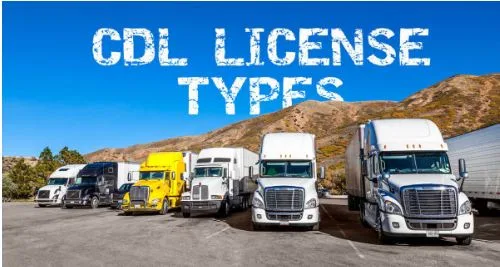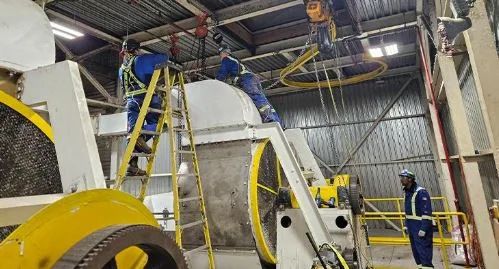What Are the Different Types of CDL Licenses and Which One Do I Need?
If you’re considering a career in commercial driving or just curious about how the trucking world works, you’ve likely heard of the term CDL, or Commercial Driver’s License. A CDL is essential for operating large, heavy, or hazardous material-carrying vehicles in the United States. However, not all CDLs are the same. There are multiple types of CDL licenses, each designed for different vehicle classes and commercial activities.
In this blog, we’ll explore:
- The three main types of CDL licenses (Class A, Class B, and Class C)
- The vehicles and endorsements associated with each
- How to decide which CDL license is right for your career goals
Understanding CDL Basics
Before diving into the different types of CDL licenses, it’s important to understand why CDLs are required. The U.S. Department of Transportation (DOT) and the Federal Motor Carrier Safety Administration (FMCSA) regulate CDL licensing to ensure that commercial drivers meet safety standards. These licenses are mandatory for drivers who operate:
- Vehicles weighing over 26,001 pounds
- Vehicles designed to carry 16 or more passengers (including the driver)
- Vehicles that transport hazardous materials
Depending on the type of vehicle and its cargo, you’ll need a specific type of CDL license.
The 3 Types of CDL Licenses
- Class A CDL
A Class A CDL allows the holder to operate any combination of vehicles with a gross combination weight rating (GCWR) of 26,001 pounds or more, provided the vehicle being towed weighs more than 10,000 pounds.
Common Vehicles You Can Drive:
- Tractor-trailers (semi-trucks or 18-wheelers)
- Truck and trailer combinations
- Tanker vehicles
- Livestock carriers
- Flatbeds
Job Roles:
- Long-haul truckers (interstate and intrastate)
- Heavy equipment haulers
- Food and beverage delivery drivers
- Freight transporters
Additional Endorsements You Might Need:
- T: Double/triple trailers
- N: Tank vehicles
- H: Hazardous materials
- X: Tanker + HazMat combined
Is Class A Right for You?
If you’re aiming for a career in long-distance or heavy freight trucking, a Class A CDL gives you the most flexibility and highest earning potential in the commercial driving field.
- Class B CDL
A Class B CDL allows you to operate a single vehicle with a GCWR of 26,001 pounds or more, or a vehicle towing another that weighs no more than 10,000 pounds.
Common Vehicles You Can Drive:
- Straight trucks
- Box trucks (like delivery trucks)
- Dump trucks with small trailers
- Large buses (e.g., school buses, city buses, tourist buses)
Job Roles:
- School or public transit bus driver
- Local delivery truck driver
- Construction site hauler
- Waste disposal truck driver
Additional Endorsements You Might Need:
- P: Passenger transport
- S: School bus
- N: Tank vehicles
Is Class B Right for You?
If you’re looking for a job that keeps you closer to home, such as driving a school bus or making local deliveries, a Class B CDL might be the best fit. It’s also a quicker path to employment, as training is typically shorter and more affordable than for Class A.
- Class C CDL
A Class C CDL is for vehicles that do not meet Class A or B definitions but are designed to transport 16 or more passengers (including the driver) or hazardous materials (HazMat).
Common Vehicles You Can Drive:
- Small passenger vans or shuttle buses
- HazMat vehicles not covered under Class A or B
- Certain delivery vehicles with specialty cargo
Job Roles:
- Airport shuttle drivers
- Limousine drivers for large groups
- HazMat delivery drivers
- Non-emergency medical transport drivers
Additional Endorsements You Might Need:
- P: Passenger transport
- H: Hazardous materials
- S: School bus
Is Class C Right for You?
If you’re working with smaller vehicles but still need to carry many passengers or hazardous materials, this license is your go-to. It’s especially popular among municipal or private shuttle services.
CDL Endorsements and Restrictions: What You Need to Know
While choosing from the different types of CDL licenses, you may also encounter endorsements and restrictions. These are additions or limitations to your CDL that define what you can or cannot do.
Common CDL Endorsements:
- H – Hazardous Materials
- N – Tank Vehicle
- P – Passenger Transport
- S – School Bus
- T – Double/Triple Trailers
- X – Combination of Tank and Hazardous Materials
Common Restrictions:
- E – No manual transmission
- L – No air brakes
- Z – No full air brake system
Understanding these letters is key to ensuring you’re fully qualified for your chosen job.
How to Choose the Right CDL License for You
Choosing among the types of CDL licenses comes down to several key factors:
- Your Career Goals
- Long-haul trucking, interstate commerce, or freight delivery? Go for a Class A CDL.
- Driving within a city or region with larger single vehicles? Consider a Class B CDL.
- Transporting passengers or handling hazardous materials in smaller vehicles? You’ll likely need a Class C CDL.
- Time and Budget
- Class A programs often take 4–8 weeks and cost $3,000–$7,000.
- Class B training is typically shorter (2–4 weeks) and less expensive.
- Class C licenses may require specialized training depending on endorsements but generally take less time overall.
- Local Job Market
Research what types of CDL drivers are in demand in your region. For instance, some areas may have more demand for school bus drivers (Class B or C), while others might need more freight haulers (Class A).
Frequently Asked Questions
Can I upgrade from Class B to Class A?
Yes, you can. Many drivers start with a Class B CDL and later upgrade to a Class A to expand their job opportunities.
Do I need a CDL to drive a pickup truck with a trailer?
If the combined weight exceeds 26,001 pounds and the trailer itself is over 10,000 pounds, then a Class A CDL would be required.
Can I hold multiple CDLs at once?
No. You can only hold one CDL license at a time, but it can be upgraded or modified with endorsements.
Final Thoughts: Which CDL License Do You Need?
There’s no one-size-fits-all when it comes to CDL licensing. By understanding the types of CDL licenses—Class A, B, and C—and aligning them with your goals, you can make an informed choice and start your journey in commercial driving on the right foot.
Whether you’re aiming for a high-paying long-haul trucking job or looking to serve your local community as a bus driver, there’s a CDL path tailored to you. Make sure to research the training programs in your area, understand the endorsements you may need, and check with your state’s DMV for specific requirements.




